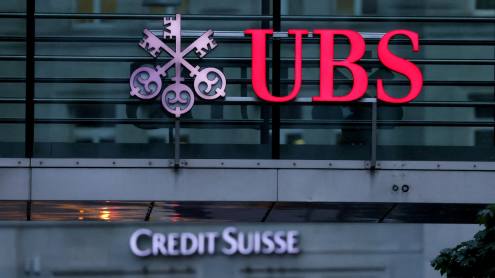A recent survey found that most financial institutions should have negligible US dollar London interbank offered rate (Libor) exposures by the end of this year. Nevertheless, pockets of concern remain despite continued warnings from regulators.
On October 6, Moody’s Investors Service published a survey of 54 banks and non-bank financial institutions, revealing that 89% of them are on track with their transition plans to alternative rates. This compares with 77% in 2020 and 52% in 2019, proving that most financial institutions are taking regulators’ warnings seriously over the sunsetting Libor.
“For the rest of the year, surveyed institutions expect to focus on increased client outreach, in particular to less responsive clients and for contracts linked to benchmarks being retired at year-end,” says Olivier Panis, a senior vice-president at Moody’s.
Typically, most institutions are moving to the Federal Reserve-approved secured overnight financing rate (SOFR). Fed vice-chair for supervision Randal Quarles recently reminded an audience of bankers of the growing urgency to ditch Libor. After this year, Libor will no longer be available for new contracts, and though some US dollar tenors will continue for legacy contracts, they too will cease after June 30, 2023.
The hold-outs
“A handful of firms have said that they may want more time to evaluate potential alternative rates. There is no more time, and banks will not find Libor available to use after year-end no matter how unhappy they may be with their options to replace it,” Mr Quarles warned the Structured Finance Association Conference in Las Vegas on October 5.
However, shifting financial products to new benchmarks is a mammoth task involving repapering millions of contracts. Currently, there are around $200tn in financial products referencing Libor, including $1tn in US residential mortgages. Fortunately, many Libor-referencing products, such as derivatives, are short-lived and are expiring ahead of the deadlines.
In recent months, several lawyers have told Global Risk Regulator that there are a small number of banks still hoping for further extensions to Libor cessation deadlines, despite increasingly strident warnings from regulators that there will be no more delays.
A handful of firms have said that they may want more time to evaluate potential alternative rates
Mr Quarles explained that based on data for the second quarter 2021, the Fed estimates that large firms used alternative rates for fewer than 1% of floating rate corporate loans and 8% of derivatives. “To be ready for year-end, lenders will have to pick up the pace, and our examiners expect to see supervised institutions accelerate their use of alternative rates,” he said.
The Moody’s survey found that one of the main stumbling blocks for coming off Libor from next year onwards is client unresponsiveness with a particular problem around ‘tough’ legacy contracts. These are often bespoke long-dated products. An ongoing complaint is that SOFR is a risk-free rate and therefore does not replicate Libor’s credit sensitivity, a particular issue for loan markets.
The ratings agency raised other transition snags such as insufficient liquidity in the new benchmarks. It said liquidity concerns mainly centre around cash products, since term markets have yet to show liquidity on a par with overnight markets. But there does appear to be movement. “The key to increasing alternative reference rate liquidity, say respondents, is investor and borrower demand, which is growing with wider availability of forward-looking term rates and as inter-dealer brokers switch trading of interest rate swaps from Libor to alternative reference rates,” the authors of the Moody’s report wrote.
Addressing the concerns around SOFR for some users, Mr Quarles said: “A bank may use SOFR for its loans, but it may also use any reference rate for its loans that the bank determines to be appropriate for its funding model and customer needs.” For example, small and medium-sized US banks tend to prefer the American interbank offered rate (Ameribor) as it does reflect credit risks. There is even an Ameribor futures contract hosted by the Cboe Global Markets exchange.
Strong support
However, regulators and trade associations have bent over backwards to provide legal solutions, such as fallback language to ease the transition to alternative rates, including extending the life of key dollar Libor tenors into 2023.
For example on October 6, the Alternative Reference Rates Committee (ARRC) published a summary of its recommendations for spread-adjusted fallbacks for contracts referencing US dollar Libor. The ARRC is composed of market participants and the New York Fed and aims to facilitate the transition to SOFR.
“Today’s summary provides market participants with a central document that captures each of the ARRC’s recommendations regarding spread-adjusted fallbacks,” says Tom Wipf, ARRC chair and vice-chairman of institutional securities at Morgan Stanley, explaining that market participants now have all the needed tools to transition to SOFR.
And the regulatory agencies have been working in concert to wean the financial system off Libor.
A case in point is the US Commodity Futures Trading Commission with its ‘SOFR First’ initiative adopted on July 13, 2021. This is a set of recommendations for inter-dealer brokers to switch from trading Libor swaps towards trading SOFR alternatives before year-end and is supported by industry groups and regulators worldwide.
“Reviewing banks’ cessation of Libor use after year-end will be one of the highest priorities of the Fed’s bank supervisors in the coming months,” Mr Quarles said. “The year of magical thinking is over.”
Financial institutions have been consistently warned by regulators about the demise of Libor. Those that nonetheless find themselves in difficulty once Libor ceases are unlikely to earn much sympathy from regulators.
This article first appeared in The Banker’s sister publication Global Risk Regulator.












